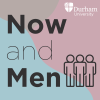Men and masculinities are now on the public agenda. There is growing attention in Ireland and around the world to the gendered attitudes, practices, and relations associated with men and boys and their implications for health, violence and gender inequality. There are various signs of this: intensified public debate over codes of masculinity, growing attention to men and masculinities in policy and programming, increasing scholarship on the links between masculinities and various social issues, and men’s activism and advocacy.
Articles
Apart from what it means in their own lives, men’s exposure to violence, trauma and adversity are key risk factors for men’s self-inflicted harm and their use of violence against others. Equimundo’s report, Making the Connections: Masculinities and Male Trauma, highlights the role masculinities play in boys and men’s ability to cope with their impact.
An ally is a member of a privileged group who acts to challenge or dismantle that same privilege. Ally politics involves members of privileged groups taking action to undermine that same privilege: white people challenging racism, heterosexual people challenging heterosexism and homophobia, and of course, men challenging sexism.
Key elements of male allyship therefore include the following.
Anti-feminist content by and for men is everywhere online. Social media influencers like Andrew Tate have risen to global prominence and notoriety in the past few years as the ‘manosphere’ of sexist and violence-supportive online forums and digital media continues to grow. But what about pro-feminist digital media?
There is growing interest in using online media among men and boys to prevent men’s violence against women and girls, prompted by two insights. First, such media may be effective ways to reach and educate large numbers of boys and men. Organisations such as schools and universities involved in violence prevention education are turning increasingly to online media as platforms for education on violence, gender, and healthy relationships, using these to deliver curricula to large cohorts of students and others.
Men’s rights advocates (MRAs) are deeply hostile to feminism and feminists. And in turn, MRAs are deeply hostile to pro-feminist men or male feminists.
But *how* MRAs criticise and attack male feminists betrays their own low opinions of men and their hypocrisy.
This account comes from my experience of being a visible pro-feminist male advocate, on Twitter and elsewhere, and noticing the kinds of attacks that anti-feminist men or MRAs direct at me and other pro-feminist men.
1) MRAs write off large numbers of men.
There is a wealth of content on the Internet offering men and boys rigid, restrictive and harmful ideas about masculinity and gender relations – from the Manosphere, to pornography, to mainstream news and entertainment featuring narrow models of manhood. By contrast, there remains a relative lack of material seeking to engage in positive, empowering ways with men and boys in order to strengthen their participation in debates and action in relation to gender equality and feminism.
Advancing girls and women in male-dominated industries requires the leadership, participation, commitment, and allyship of men. Engendering Industries, in partnership with Equimundo, works to engage men and individuals who identify as male to be workplace gender equality champions.
The Men in focus practice guide from Our Watch is designed to support people to address masculinities and work with men in the prevention of men’s violence against women.





